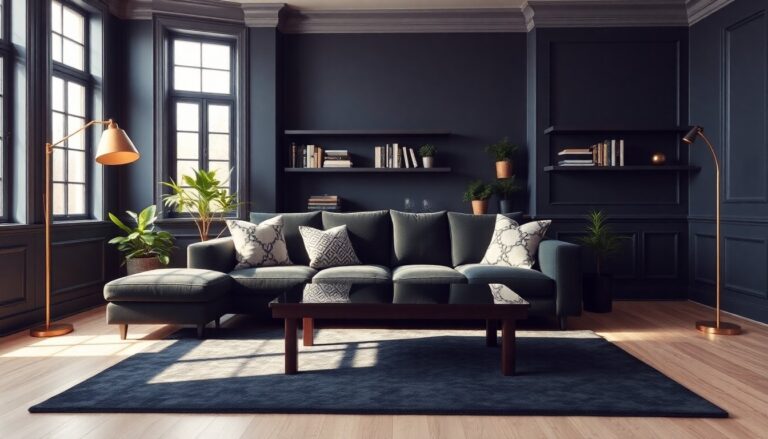Argomenti trattati
The world of interior design is in constant flux, with trends shifting like the seasons. One style that has sparked substantial discussion is the use of dark, moody paint colors. To provide clarity on this subject, five experienced designers shared their insights on whether these deep hues continue to resonate in contemporary decor.
While trends often rise and fall, certain styles, including the incorporation of dark colors, can transcend these cycles. Implementing these shades authentically can transform a space into one of sophistication and comfort. Let us explore their perspectives further.
Understanding the appeal of moody colors
Dark paint colors evoke a sense of drama and intimacy, gaining popularity over the years. Their unmatched ability to create a cozy atmosphere makes them appealing to many homeowners. Designer Emma L. notes that these shades can create striking contrasts with lighter elements, enhancing the overall aesthetic of a room.
“When used thoughtfully, moody colors can evoke emotions and set the tone for a space,” she explains. “They encourage relaxation and can make a room feel more inviting.” This sentiment is echoed by her peers, who appreciate how darker shades bring depth to a room.
Combining dark hues with natural light
A critical aspect of using dark paint colors is achieving a balance between light and dark. Designer Mark T. emphasizes the importance of natural light in spaces adorned with these shades. “Incorporating large windows or using reflective surfaces can help prevent the room from feeling too enclosed,” he suggests.
Moreover, the strategic use of lighting can enhance the impact of dark colors. “Layering different light sources—ambient, task, and accent—can create a dynamic atmosphere that breathes life into darker shades,” adds designer Lisa K. This approach highlights the beauty of the paint while ensuring the room remains functional and welcoming.
Choosing the right dark color
When selecting a dark shade, it is essential to consider the mood you wish to create. Different colors convey varying emotions; for instance, a deep navy might instill calm, while a rich charcoal can create a dramatic effect. Designer Tom R. advises testing colors in your space before making a commitment. “Paint a small section of the wall and observe how it interacts with light at different times of the day,” he recommends.
Furthermore, the choice of finish plays a significant role in how the color appears. A matte finish can lend a softer, more muted feel, while satin or glossy finishes might reflect light, making the color appear more vibrant. “Experimenting with different finishes can lead to surprising results,” notes designer Sarah P. “You might discover a shade you love in a finish you hadn’t considered.”
Creating harmony with dark colors
Integrating dark colors into a design scheme does not mean sacrificing brightness. The key lies in balancing darker tones with lighter elements. “Contrast is vital,” states designer Emma L. “Pairing dark walls with lighter furniture or decor can create a visually appealing harmony.”
Incorporating textural elements adds depth and interest to your space. “Consider using textiles, such as cushions or throws, that introduce lighter or contrasting colors,” suggests Mark T. “This layering technique can soften the overall look while keeping the focus on the rich hues.”
Timelessness versus trends
While trends often rise and fall, certain styles, including the incorporation of dark colors, can transcend these cycles. Implementing these shades authentically can transform a space into one of sophistication and comfort. Let us explore their perspectives further.0
While trends often rise and fall, certain styles, including the incorporation of dark colors, can transcend these cycles. Implementing these shades authentically can transform a space into one of sophistication and comfort. Let us explore their perspectives further.1

